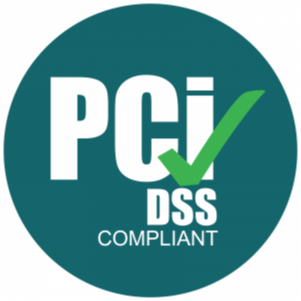Quick Summary
- Most companies think they are customer-centric, but the data tells a different story.
- Voice of the Customer (VoC) programs help to bridge this gap to understand what your customers truly feel and why.
- Strong VoC programs deliver significant competitive advantages, deriving loyalty and revenue
- Sogolytics makes VoC practical, scalable, and affordable.
Do you really know what your customers want and how they feel about your company? Building a customer-centric business requires more than just good instincts. Relying on assumptions or old research can be a trap, leading you into making bad decisions.
Unfortunately, most companies make decisions about what their customers want without ever really asking them. That’s dangerous.
You may be familiar with this research nugget:
80% of executives think their company is customer-centric, but only 8% of customers agree.
It comes from a Bain & Company study, and it should give you pause. While the ratio might be a little different in your business, the underlying premise remains. If you think your company’s doing fine, you need to dig a little deeper and make sure your customers agree.
A Voice of the Customer (VoC) program does exactly that, providing a structured approach to capturing real feedback and looking for patterns. By truly listening to customers, you can close this gap and build a solid foundation for growth.
What Is Voice of the Customer (VoC)?
Voice of the Customer (VoC) is a systematic process for collecting, analyzing, and acting on customer feedback to make smarter business decisions using a data-driven understanding of customer sentiment. Gut feeling and industry research is only going to get you so far. If you want to move the needle, you need clear feedback.
You likely already have several mechanisms in place to find out how customers feel. Quantitative measures like Net Promoter Score (NPS), Customer Satisfaction (CSAT), and Customer Effort Score (CES) can help, but it takes a holistic approach across each stage of your customer’s journey to give you a more complete picture.
Unlike basic feedback programs, VoC connects data from multiple channels (surveys, online reviews, social media, and support interactions), looking for patterns that impact satisfaction, loyalty, and advocacy. For example, you might gather survey responses after a purchase, analyze sentiment using text analytics, and share insights across departments to refine product design and customer support processes.
Why Voice of the Customer Matters
What’s the biggest expense for most businesses?
If you said labor costs, cost of goods sold (COGS), or customer acquisition costs (CACs), you might be surprised to find out that, for most companies, it’s poor customer service. It’s estimated that U.S. businesses collectively lose billions each year due to poor customer service. Globally, it adds up to $3.7 trillion. It’s not really surprising how bad this is if you think about it. You spend all that time and money trying to attract new customers and onboard them. If they have a bad customer experience and leave, that’s money down the drain. Forget about lifetime customer value.
If you’re not listening to your customers, really listening, you’re putting a big chunk of your revenue at risk. A strong VoC program helps you anticipate issues before they become real problems and lead to that dreaded word — churn.
Research consistently shows that customer-centric businesses outperform the market. 92% of companies that provided strong customer experiences grew revenue last year, compared to just 50% of those that didn’t meet CX benchmarks.
A well-executed VoC strategy is really about more than a feedback mechanism, though. It should be a centerpiece of alignment throughout your organization. By including “customer truths” in decisions, you can avoid blind spots, assumptions, and unintentional bias in your decision-making.
The Benefits of a Strong VoC Program
Companies with strong Voice of the Customer programs do things differently. They take VoC analytics seriously and act on it. When they do, they experience significant benefits.
Better Customer Experience Across Touchpoints
VoC provides the real-time visibility you need to know what customers expect (and get) at each stage of their journey. This helps you find hidden problems, understand where customers get frustrated, and get rid of friction points. The result? Better CV and a stronger emotional connection with your brand, leading to a strong ROI.
Better Product Innovation Based on Customer Insights
Feedback tells you what’s wrong, but also what’s possible. VoC data can help identify customer needs that aren’t being met, new features that customers want, and opportunities to differentiate your products. Innovation often comes from outside your organization.
Stronger Customer Relationships
When you ask for customer journey feedback and truly listen, you’re showing respect for your customers. When you act on that feedback, you’re sending a powerful message that you value them. This inspires loyalty and trust. As you know, your most loyal customers are responsible for the biggest source of your revenue.
Competitive Advantage
Understanding why customers make decisions is crucial. VoC analytics can find those customer insights to give you an edge, helping you adapt faster and offer something your competitors don’t.
Implementing Voice of the Customer with Sogolytics
Sogolytics simplifies the process of designing, executing, and scaling an effective Voice of the Customer program with a full suite of survey and feedback tools to capture insights from every channel and listen where customers are engaging with you.
Advanced AI-driven analytics then translate this data into actionable intelligence. You can see what’s happening in real-time and get recommendations based on what it all means. Natural Language Processing (NLP) automatically identifies themes and sentiment within open-ended responses, giving you visibility into what customers care about most.
You also get automated workflows and custom alerts to close the feedback loop quickly. In short, Sogolytics empowers organizations to turn customer voices into a competitive advantage.
More Than Feedback
The Voice of the Customer is so much more than a way to solicit feedback. It’s about creating a foundation for turning your business into a customer-centric organization, driving loyalty and repeat business.
By leveraging a powerful VoC platform like Sogolytics, you can embed customer thinking in every decision to serve your customers best. Request a demo today and let us show you how we can help you turn insights into growth opportunities.
FAQs — Frequently Asked Questions About Voice of the Customer (VoC)
What does Voice of the Customer (VoC) mean in business?
Voice of the Customer is a formal program to collect and analyze feedback from your customers. Doing so helps you better understand how they view their experience and expectations. These insights help you align decision-making with real customer needs.
How is VoC different from customer feedback?
Traditional feedback is often gathered piecemeal and conducted as point-in-time research that can quickly become outdated. VoC, by comparison, is both continuous and strategic. By taking a more holistic approach to gathering feedback consistently, you get a more complete picture of customer sentiment and how it changes over time.
What are the most effective methods for collecting VoC?
Surveys, interviews, focus groups, and digital listening tools are all effective methods. Combining quantitative metrics with qualitative insights helps you understand what customers think and why they act the way they do.
Why is VoC important for customer experience?
VoC empowers you by identifying pain points, measuring satisfaction, and responding with targeted improvements. The result? stronger relationships, reduced churn, and a more consistent brand experience.
How can Sogolytics support a Voice of the Customer program?
Sogolytics offers advanced survey tools, analytics dashboards, and AI-powered feedback analysis. These solutions simplify the process of collecting insights at scale, interpreting them in real time, and taking action to improve customer satisfaction.














